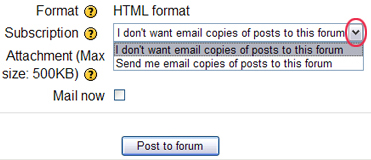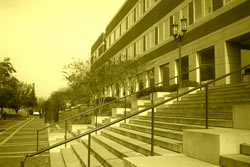|
February 14th: User Test for
User Document #1
Announcements
An Article for Valentine's Day
In case you missed this last week, I still have the link to the article proving that it just gets worse...This is an excellent reading to share with your partner, spouse, significant other, etc.
IRA-Career Essays...whoops!
I made a valient effort to finish commenting on all your essays, but I fell short of my goal. Oh well, I'll get them back to you next week. I have a page on some issues we can address next week, so, if you want some feedback on your IRA-Career Essays, check it out...and, I guess, enjoy!
Technical Writing 101: Chapters 3, 4, & 5
Obviously, the textbook is presenting you
with ideas that couldn't possibly be done in a semester class. That
doesn't mean the reading isn't important, though. As a few of you
know--even if you hate it--I don't see class as a place to learn skills A, B,
and C to apply to corresponding problems A, B, and C. Instead, I think
class (and higher education in general) is a place to explore theories that
shape practices. You don't have to PRACTICE everything to get value from
what you read. Discussions should open up perspectives that make us "test" our own assumptions.
Chapter 3 Highlights:
Chapter 3 provides us with something I've never seen in a technical communication textbook--an entire chapter devoted to outlines and planning. Although the material is general and might not apply to all situations, there is value.
- Product Description: what the product/instrument does
- Audience: the readers/users--who they are, what they are, how the are
- Style: What's a style guide?
- Purdue University's OWL
- Correctness and Choice
- Higher Order Concerns (HOCs): Organizaton, structure, content, etc.
- Lower Order Concerns (LOCs): Spelling, grammar, punctuation, consistency, etc.
- Grammar: a hygienic factor, but a crucial one. See Sancho's discussion (from the 2116 class)
- Outlines: When do you use them?
- Tab-delimited files
Chapter 4 Highlights:
- What software is the best to know?
- Screen Captures...again
- Software Training at Community Colleges
- Ergonomics
- Where do you work best?
- What is your ideal work environment: telecommuting, office, field, etc.?
- Those sound like good discussion points. Hop on over to Moodle and do your magic. The discussion is under My Ideal Work Situation.
To avoid getting e-mails of all posts, make sure you select "I don't want email copies of posts to this forum" from the Subscription text box at the bottom of the page (before you hit reply).

Chapter 5 Highlights:
- Specs, Mock ups, and SMEs
- Prototypes
- Alpha and Beta testing
- Who are these testers?
- Perpetual automatic updates
- (Almost) 30 Ways to get information
- Be critical and/or critically aware of feedback
- Pet peeves and Grammatical Hang ups
- Users may provide good information, but don't forget Cooper's Car p. 125 and Homer's Design
Interactive Design vs. Usability Testing
There's an interesting assignment that
comes from a previous textbook I used for this class on paper prototyping:
Exercise: Working in groups, create a "paper" prototype for an information kiosk to assist visitors to your campus or office building or to a shopping mall or museum. The kiosk will be located in the lobby or central location (you define where). Visitors unfamiliar with the services or locations of departments would consult this kiosk to get a sense of where to go and how to get there. Consider the types of visitors you need to help and the types of information they will want. Create a profile of your primary visitors and tasks. You should type this up and include it somewhere (where I can see it) along with your screen capture. Then, create the "interface," beginning with the main screen, from which the user can select other screens for information. (Exercise comes from Barnum, 2002, p. 137)**
Instead of using index cards or paper, use the Notepad and have separate
text files (.txt) represent different cards. One of you should host the final prototype on his/her webpage, but each member should have a link to the prototype and to your audience profile, which should clearly specify primary, secondary, and, if applicable, tertiary users. Make screen captures or an entire screen capture of the layout the group creates.
When this is complete, we'll discuss your reasons as a larger class. We'll pay particular attention to your audience theories and your mental model of how that particular kiosk should be set up.
VA Tech Kiosk
Time permitting, I want to play a little memory game based on
the short- and long-term memory, but, if
we're short on time tonight, we'll skip it.
USER TEST #1
Today you'll have a chance to do some
usability testing on your wonderful classmates. I want half of you to be the
users for the other half of class, and then we'll switch sides. However, I want
to avoid having users and testers be the testers and users for each
other; therefore, test/be the user for another person. Then you may get a new person to test your user doc.
Think of this as a practice user test. Pull out a sheet of paper, or type this up. I want you to do a pre-test interview that asks the following of your user. You aren't turning this in, but I expect it to possibly be a discussion point:
On a scale of 1-5 (1 being least, 5 being greatest), rate your computer literacy.Why do you believe you are or are not "computer literate"? In other words, what skills or knowledge do you have or don't have that makes you claim you're computer literate or not.What is the user's major/background?
After the pre-test interview, let the user get to it and note how
the users interact with your document. TRY YOUR BEST NOT TO INFLUENCE him or her. Don't lead them to a specific task or component; observe what
happens. Observe what the user does and whether or not they use your document.
After the user does his or her thing, then
interview and ask what you can do to improve the instructions. Record this somewhere.
Your User Doc should include the following when you turn it in next week:
-
A brief description of the instrument
-
Explanation of how the user will
approach the set of instructions
-
Information on two personas
- The actual document--the steps on how to use the search engine
The first three items can be seen as one document, a preliminary work. The fourth item is your actual steps or procedures for getting a user through the search engine query you're using.
Future Testing
Later on in the semester, I'll ask for more detailed
descriptions and usability testing procedures (i.e., questions, settings,
specific goals). Consider the test you did today a starting point from where we'll build toward a
larger planning stage.
Before We Go...
Make sure you have a printed-out copy of your User Doc #1 next class. Keep up with the reading--Ch. 6, 7, & 8. We'll plan for User Doc #2 next week and have a Midterm preview.
**Barnum, Carol M. (2002). Usability Testing and Research. New York: Longman.
.. |
